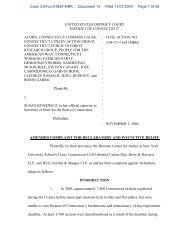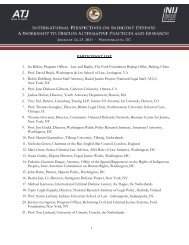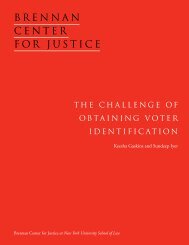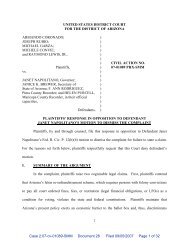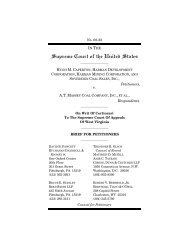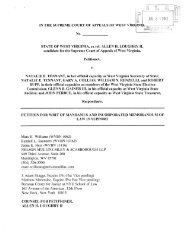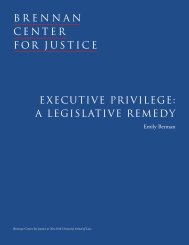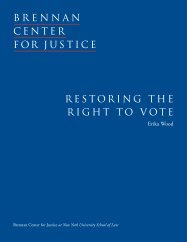THE NEW YORK STATE LEGISLATIVE PROCESS: AN ...
THE NEW YORK STATE LEGISLATIVE PROCESS: AN ...
THE NEW YORK STATE LEGISLATIVE PROCESS: AN ...
You also want an ePaper? Increase the reach of your titles
YUMPU automatically turns print PDFs into web optimized ePapers that Google loves.
Neither of New York State’s two chambers requires that committees vote on the<br />
bills referred to them. Moreover, New York State’s Legislature renders it extremely<br />
difficult for a bill to be voted out of a committee for consideration by the full<br />
chamber even despite significant support. In both the Assembly and the Senate,<br />
the committee chairs alone determine whether to place a bill on the committee’s<br />
agenda for consideration or a vote. 104 This means that minority party members<br />
of a committee can rarely obtain consideration of the bills they support because<br />
all committees are chaired by members of the majority party. It also means that<br />
the Speaker and Majority Leader are able to control fully which bills reach a vote<br />
in committee through the committee chairs.<br />
Moreover, most legislative chambers allow motions on the floor of the full<br />
chamber to discharge a bill from committee if a committee does not bring its consideration<br />
of a bill to a vote and report the bill to the legislative calendar. 105 Such<br />
discharge motions are intended to allow supporters of a bill to obtain consideration<br />
by the full chamber despite the opposition or inaction of the committee to<br />
which the bill was referred or its chair. In addition, the threat of such a motion, if<br />
real, discourages legislators from sponsoring bills that they do not intend to pass. 106<br />
In New York and in most states, such motions require a majority of members<br />
elected in the chamber to vote for passage to succeed. 107 Seven chambers require<br />
only one third of members to pass such a motion. 108 In the U.S. House of<br />
Representatives, the motion to discharge is rarely used but still serves as a “safety<br />
valve” against leadership domination and thus “looms much larger in public<br />
debate . . . than would be expected from the infrequency of its successful use.” 109<br />
In New York State, however, stringent limitations on the use of discharge motions<br />
prevent consideration by the full Assembly or Senate of any legislation that does<br />
not have the Speaker’s or Majority Leader’s support, respectively. Indeed, New<br />
York is alone in placing six different restrictions of significance upon such motions:<br />
■ Only Sponsor Can Move to Discharge a Bill. In both the Assembly and the<br />
Senate, only the original sponsor of a bill is permitted to make a motion to<br />
discharge the bill from a committee. 110 Our survey of legislative rules found<br />
explicit procedures for discharging bills in 76 chambers. Only five of those 76<br />
chambers (besides New York’s two chambers) require the concurrence of the<br />
primary sponsor for such a motion to be made, and only in New Jersey’s two<br />
chambers is the primary sponsor herself required to make the motion as in<br />
New York. 111<br />
■ 60-day Waiting Period Before Discharge Motions Allowed. New York’s<br />
chambers prohibit any discharge motions to be made before a committee has<br />
had at least 60 days to consider and report a bill. 112 Although 35 of the 76<br />
chambers with express procedures impose waiting periods of some length<br />
before such a motion can be made, New York’s required waiting period of 60<br />
days is unusually long. Only five other chambers require a waiting period of<br />
more than 21 days: both Massachusetts chambers (45 days; motions still can<br />
<strong>NEW</strong> <strong>YORK</strong> <strong>STATE</strong>’S <strong>LEGISLATIVE</strong> <strong>PROCESS</strong> 15



